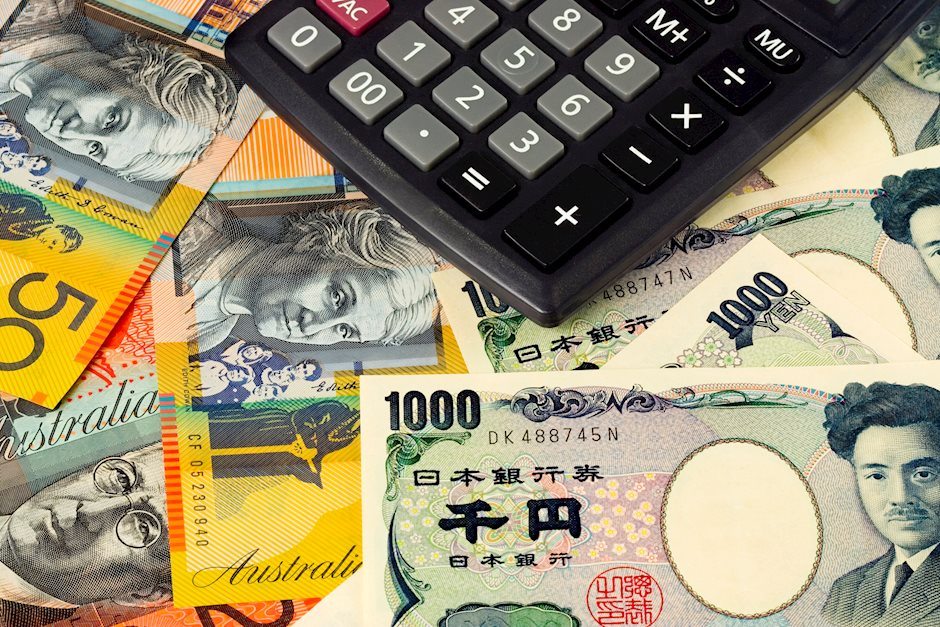Created
: 2024.11.05














![]() 2024.11.05 12:57
2024.11.05 12:57
The AUD/JPY cross gains traction to near 100.40 during the Asian trading hours on Tuesday. The Australian Dollar (AUD) edges higher after the Reserve Bank of Australia (RBA) interest rate decision.
The RBA kept the Official Cash Rate (OCR) on hold at 4.35% following the conclusion of its November policy meeting. The decision came in line with market expectations. The Aussie remains firm following the RBA rate decision.
According to the RBA Monetary Policy Statement, the board members will continue to rely upon the upcoming data and the evolving assessment of risks. The policymaker further stated that the monetary policy will need to be sufficiently restrictive until the central bank is confident that inflation is moving sustainably toward the target range.
Traders will take more cues from the RBA's updated economic forecasts and Governor Michele Bullock's press conference, which might offer some insight into the interest rate outlook.
On the other hand, the uncertainty surrounding the US presidential election could boost the safe-haven currency like the Japanese Yen (JPY) and cap the upside for the cross. Additionally, less dovish remarks from BoJ Governor Kazuo Ueda could underpin the JPY in the near term. "Many market players had bet that the next rate hike will come in the January-March quarter next year. But he sounded as if he left open the chance of a December hike," said Hiroshi Watanabe, senior economist at Sony Financial Group.
The Reserve Bank of Australia (RBA) sets interest rates and manages monetary policy for Australia. Decisions are made by a board of governors at 11 meetings a year and ad hoc emergency meetings as required. The RBA's primary mandate is to maintain price stability, which means an inflation rate of 2-3%, but also "..to contribute to the stability of the currency, full employment, and the economic prosperity and welfare of the Australian people." Its main tool for achieving this is by raising or lowering interest rates. Relatively high interest rates will strengthen the Australian Dollar (AUD) and vice versa. Other RBA tools include quantitative easing and tightening.
While inflation had always traditionally been thought of as a negative factor for currencies since it lowers the value of money in general, the opposite has actually been the case in modern times with the relaxation of cross-border capital controls. Moderately higher inflation now tends to lead central banks to put up their interest rates, which in turn has the effect of attracting more capital inflows from global investors seeking a lucrative place to keep their money. This increases demand for the local currency, which in the case of Australia is the Aussie Dollar.
Macroeconomic data gauges the health of an economy and can have an impact on the value of its currency. Investors prefer to invest their capital in economies that are safe and growing rather than precarious and shrinking. Greater capital inflows increase the aggregate demand and value of the domestic currency. Classic indicators, such as GDP, Manufacturing and Services PMIs, employment, and consumer sentiment surveys can influence AUD. A strong economy may encourage the Reserve Bank of Australia to put up interest rates, also supporting AUD.
Quantitative Easing (QE) is a tool used in extreme situations when lowering interest rates is not enough to restore the flow of credit in the economy. QE is the process by which the Reserve Bank of Australia (RBA) prints Australian Dollars (AUD) for the purpose of buying assets - usually government or corporate bonds - from financial institutions, thereby providing them with much-needed liquidity. QE usually results in a weaker AUD.
Quantitative tightening (QT) is the reverse of QE. It is undertaken after QE when an economic recovery is underway and inflation starts rising. Whilst in QE the Reserve Bank of Australia (RBA) purchases government and corporate bonds from financial institutions to provide them with liquidity, in QT the RBA stops buying more assets, and stops reinvesting the principal maturing on the bonds it already holds. It would be positive (or bullish) for the Australian Dollar.
![]()
Created
: 2024.11.05
![]()
Last updated
: 2024.11.05

FXStreet is a forex information website, delivering market analysis and news articles 24/7.
It features a number of articles contributed by well-known analysts, in addition to the ones by its editorial team.
Founded in 2000 by Francesc Riverola, a Spanish economist, it has grown to become a world-renowned information website.
We hope you find this article useful. Any comments or suggestions will be greatly appreciated.
We are also looking for writers with extensive experience in forex and crypto to join us.
please contact us at [email protected].
Disclaimer:
All information and content provided on this website is provided for informational purposes only and is not intended to solicit any investment. Although all efforts are made in order to ensure that the information is correct, no guarantee is provided for the accuracy of any content on this website. Any decision made shall be the responsibility of the investor and Myforex does not take any responsibility whatsoever regarding the use of any information provided herein.
The content provided on this website belongs to Myforex and, where stated, the relevant licensors. All rights are reserved by Myforex and the relevant licensors, and no content of this website, whether in full or in part, shall be copied or displayed elsewhere without the explicit written permission of the relevant copyright holder. If you wish to use any part of the content provided on this website, please ensure that you contact Myforex.
Myforex uses cookies to improve the convenience and functionality of this website. This website may include cookies not only by us but also by third parties (advertisers, log analysts, etc.) for the purpose of tracking the activities of users. Cookie policy